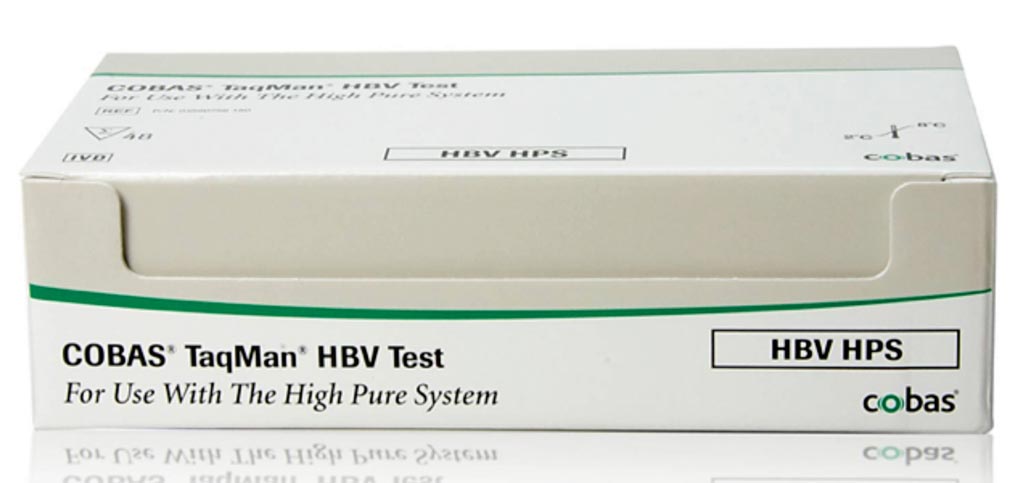Assay Detects Hepatitis B in Multiple Specimens
By LabMedica International staff writers
Posted on 25 Apr 2018
Hepatitis B virus (HBV) infection has led to more than 686,000 deaths worldwide per year. Approximately two billion individuals worldwide are infected with HBV and are at risk of developing cirrhosis and hepatocellular carcinoma, which ranks fifth in terms of malignant cancer mortality.Posted on 25 Apr 2018
A novel HBV assay that offers advantages over currently used methods because it has the capability to detect closed circular DNA (cccDNA) in serum, single cells, and preserved tissue samples. This assay can be used to diagnose hepatocellular carcinoma (HCC) at an earlier stage to manage treatment more effectively.

Image: The COBAS TaqMan HBV test (Photo courtesy of Roche Diagnostics).
Scientists at the Wuhan University (Wuhan, China) enrolled a total of 168 patients with HBV infection (HBsAg/HBV-DNA positive) in a study between December 2013 and November 2015 at the Zhongnan Hospital. The study included 79 cases of non-HCC patients, 56 without and 23 with cirrhosis; 50 males and 29 females; mean age, 41.7 ±12.8 years, and 89 cases of HCC patients, 75 males and 14 females; mean age, 53.4 ±15.3years. In total, 79 serum samples were collected from non-HCC patients, 68 preoperative serum samples on the first day after hospital admission and 14 paired formalin-fixed paraffin embedded (FFPE) tumor tissues, as well as 21 non-paired FFPE tumor tissues from HCC patients.
Serum HBV-DNA copy number was assayed with COBAS TaqMan 48 kit. The serological HBsAg, hepatitis B s antibody (HBsAb), HBeAg, hepatitis B e antibody (HBeAb), hepatitis B c antibody (HBcAb), and anti-HCV were detected by Architect chemiluminescent enzyme immunoassays. The cccDNA copy number was quantified using the QX200 Droplet Digital PCR system. Clinical biochemical parameters and tumor biomarkers were measured by an automatic chemistry analyzer.
The team found ddPCR was useful to identify which patients might be harboring hepatocellular carcinoma and found that almost 90% of 68 HCC patients were cccDNA-positive compared to 53% of 79 non-HCC patients. Serum cccDNA copy number was found to be higher in HCC patients compared to non-HCC patients. The combined analysis of serum cccDNA and HBV-DNA distinguished HCC patients from non-HCC patients. The investigators were also able to confirm that serum cccDNA was positively correlated with levels of cccDNA measured in liver samples.
Song-Mei Liu, MD, PhD, the lead investigator, said, “The development of HCC is strongly associated with HBV. Recently, several new antiviral strategies targeting cccDNA have been established to improve HBV clearance. It is of great clinical significance to provide an accurate and sensitive approach for cccDNA detection. With this method, more and more patients with chronic HBV will have precision treatment available to prevent or delay HCC occurrence, and HCC in patients could be diagnosed at an earlier stage.” The study was published on April 12, 2018, in The Journal of Molecular Diagnostics.
Related Links:
Wuhan University














